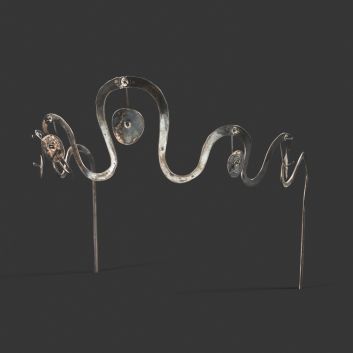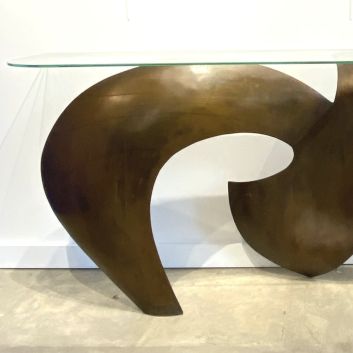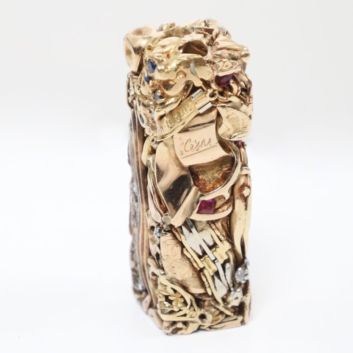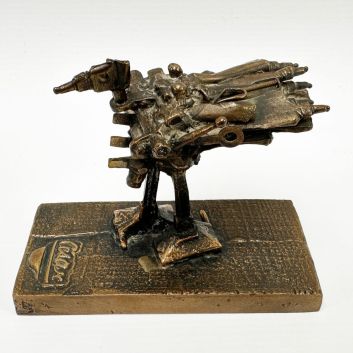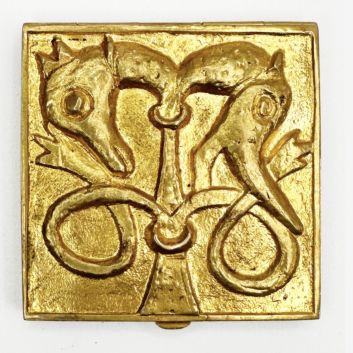Rating and value of Bruno Catalano's sculptures, bronzes and statuettes
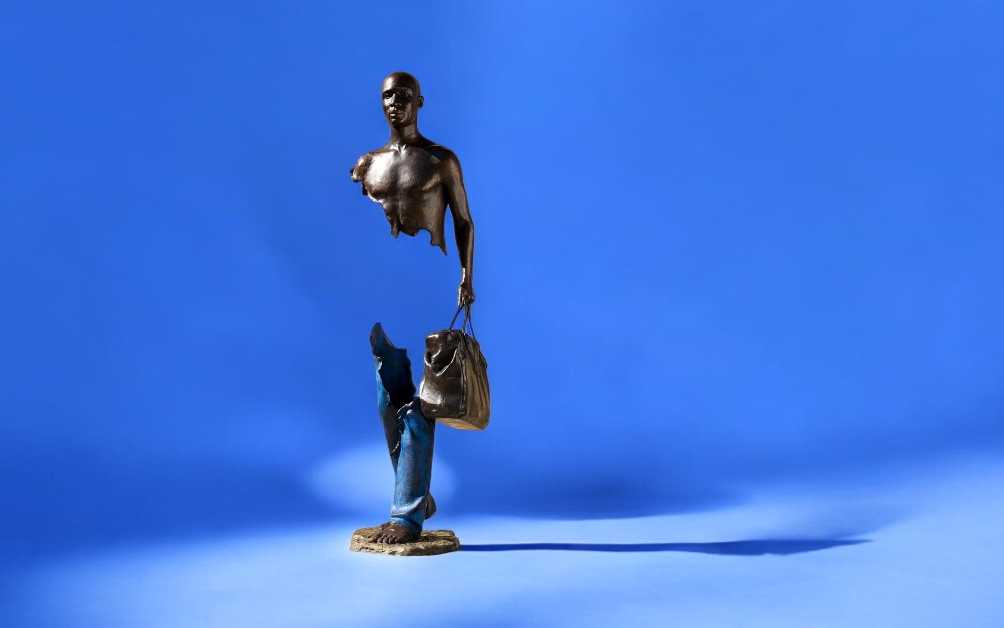
If you own a work by or after Bruno Catalano, and would like to know its value, our state-approved experts and auctioneers can offer you their expert appraisal services.
Our specialists will carry out a free appraisal of your work, and provide you with a precise estimate of its current market value.
Then, if you want to sell your work, we'll point you in the right direction to get the best possible price for it.
Rating and value of Bruno Catalano's works
Bruno Catalano has produced one-of-a-kind sculptures. Nowadays, prices for these creations can rise considerably under the auctioneer's hammer. His sculptures are particularly prized by buyers from all over the world.
The price at which they are selling on the art market ranges from €6,800 to €70,000 at the moment, a considerable difference but one that says a lot about the value that can be attributed to Catalano's works.
In 2016, his bronze sculpture Le voyageur sold for €70,000, originally estimated at €50,000-60,000.
Order of value from a simple work to the most prestigious
Technique used - series | Results |
|---|---|
Bronze - other series | From €6,800 to €16,000 |
Bronze - Le Voyageur series | From €12,000 to €70,000 |
Response in less than 24h
Artist Bruno Catalano's style and technique
Bruno Catalano is a contemporary sculptor who works mainly in bronze. The sculptures he sells on the auction market do not exceed one meter in height, although he has produced a number of monumental works for public commissions.
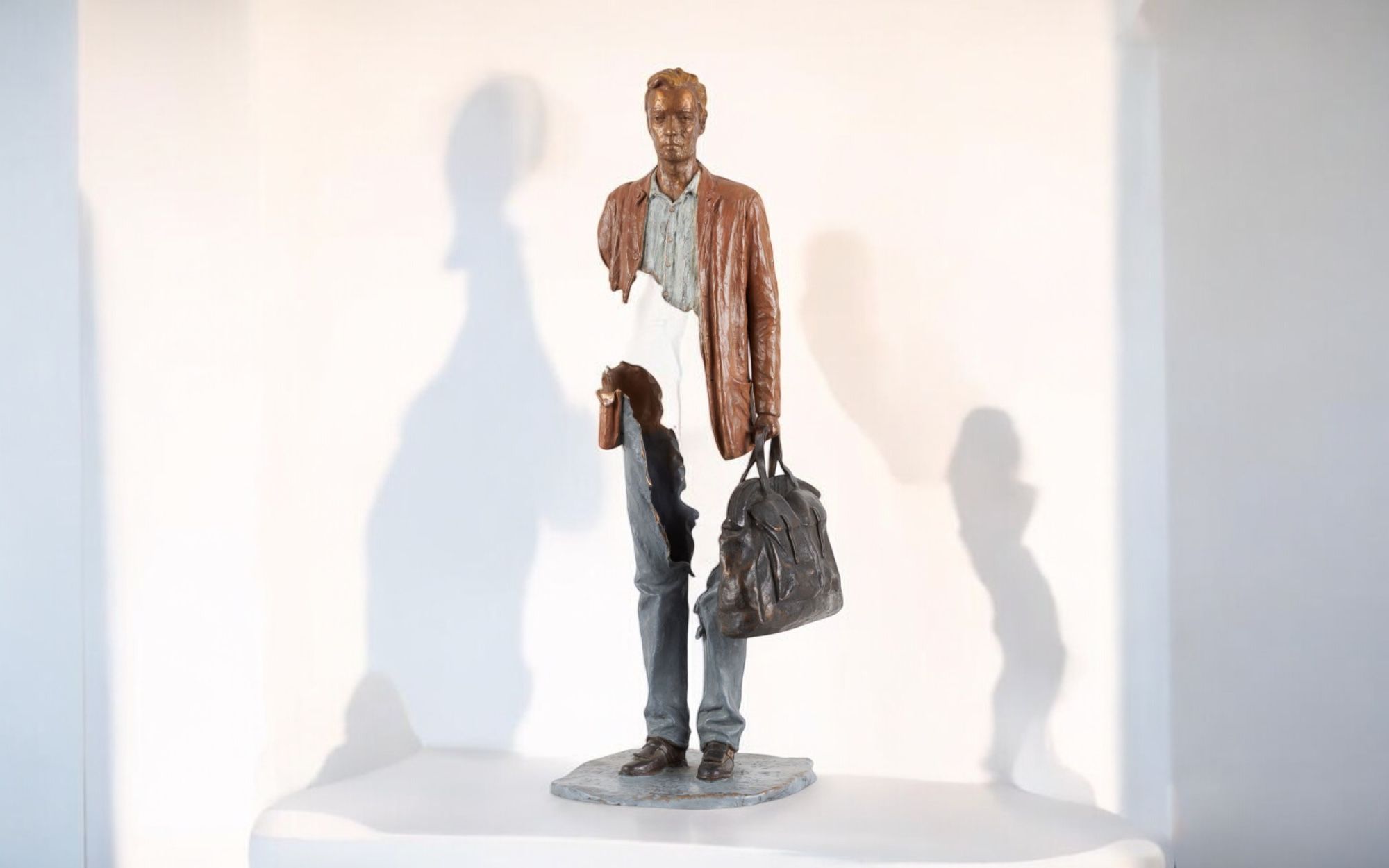
Bruno Catalano's career
Bruno Catalano, born in Morocco in 1960 to a family of Sicilian origin, is a contemporary sculptor whose work is part of a unique artistic approach deeply marked by his life's journey.
In 1970, he left Morocco with his family to settle in France, a move which, unbeknownst to him at the time, prefigured the central theme of his work: travel and migration. As soon as he arrived, he joined the Société Nationale Corse-Méditerranée, where he worked for four years.
Although this period was marked by his daily life as a sailor, it was at this point that he began to develop a growing interest in sculpture, a passion that would continue to grow.
It was in Marseille, a city open to the sea and the world, that he found his first artistic inspiration. He took classes with Françoise Hamel, a well-known artist, and learned the fundamental techniques of sculpture.
Two years after starting his apprenticeship, Catalano opened his own workshop, a decisive turning point in his career. In this creative space, he installed a kiln where he produced his first works in clay. At the time, bronze, the material that would make him famous, was not yet at the heart of his practice.
It was only later that he adopted bronze, a material that would become the medium par excellence for expressing his artistic vision. This transition to bronze sculpture was not without a few technical mishaps.
Indeed, it was during one of his first attempts that an unexpected flaw appeared in one of his works. Far from dismissing this incident, Catalano saw it as a creative opportunity. This flaw, this absence in the material, was to become his artistic signature.
He then decided to reproduce and refine this technique, giving birth to fragmented characters, as if torn apart by the ordeal of travel or exile.
The Voyageurs series is certainly the most famous culmination of this approach. These sculptures, with their partially empty bodies, evoke absence, loss and the quest for identity.
In 2013, his adopted city of Marseille hosted a landmark exhibition: ten of his Voyageurs were installed on the Old Port.
The event is a sensation, and the public is captivated by these enigmatic silhouettes that seem to float between two worlds, perfectly symbolizing the spirit of travel, passage and memory.
Backstage at the Catalano workshop
Focus on the Voyageur series, Bruno Catalano
Bruno Catalano's intriguing sculpture takes us on a very special journey. This bronze man, partially obliterated at the center, seems to have stepped straight out of a dream or a hazy memory.
He holds his travel bag in one hand, looking a little lost, as if he's getting ready to leave, but doesn't really know where he's going. This emptiness in the middle of his body immediately catches the eye, and seems to tell us something profound about absence, distance, or perhaps the quest for self.
Here, Catalano plays with the idea of the traveler, a central theme in his work, where we guess that what's missing is just as important as what's present.
Catalano's work is part of a long tradition of sculptors using bronze, a noble and solid material. Artists such as César Baldacciniwho also shook up expectations of bronze, notably with his famous "Compressions".
Where Caesar compacted cars and metal objects down to their essentials, Catalano does something different: he removes a part of the human body, creating a thought-provoking void. The contrast between the solidity of bronze and the physical absence at the center of the figure is striking.
Other twentieth-century sculptors also explored themes close to this absence. Take Giacometti, for example, with his elongated, fragile figures.
Although his style is very different, the works of Giacometti the same quest to understand the essence of the human being, to reduce him to what is essential.
Catalano's aim is not to elongate or deform the figure, but to fragment it, to render it incomplete, as if part of the traveler's story had been lost along the way.
The realism of the figure's details - his crumpled clothes, his worn shoes - makes the sculpture's central emptiness all the more striking.
It's clear that this man is real, yet incomplete. It's as if the artist wanted to remind us that every journey changes us, taking and leaving us with fragments of ourselves.
This interplay between presence and absence also recalls the work ofAuguste Rodinwho also liked to work with incomplete figures to express strong emotions. For Rodin, the unfinished was a way of leaving room for the imaginary; for Catalano, it's a way of speaking of emptiness, of what's missing.
Instead of geometric shapes, he plays with emptiness. What's absent in his figures is just as important as what's there, and this creates a balance that calls out.
In short, this sculpture by Bruno Catalano is much more than a simple representation of a traveler. It's a work that speaks of lack, quest and identity, themes that resonate deeply with each and every one of us.
Through this bronze, the artist invites us to reflect on what we leave behind at each stage of our lives, and what we always take with us, even in absence.
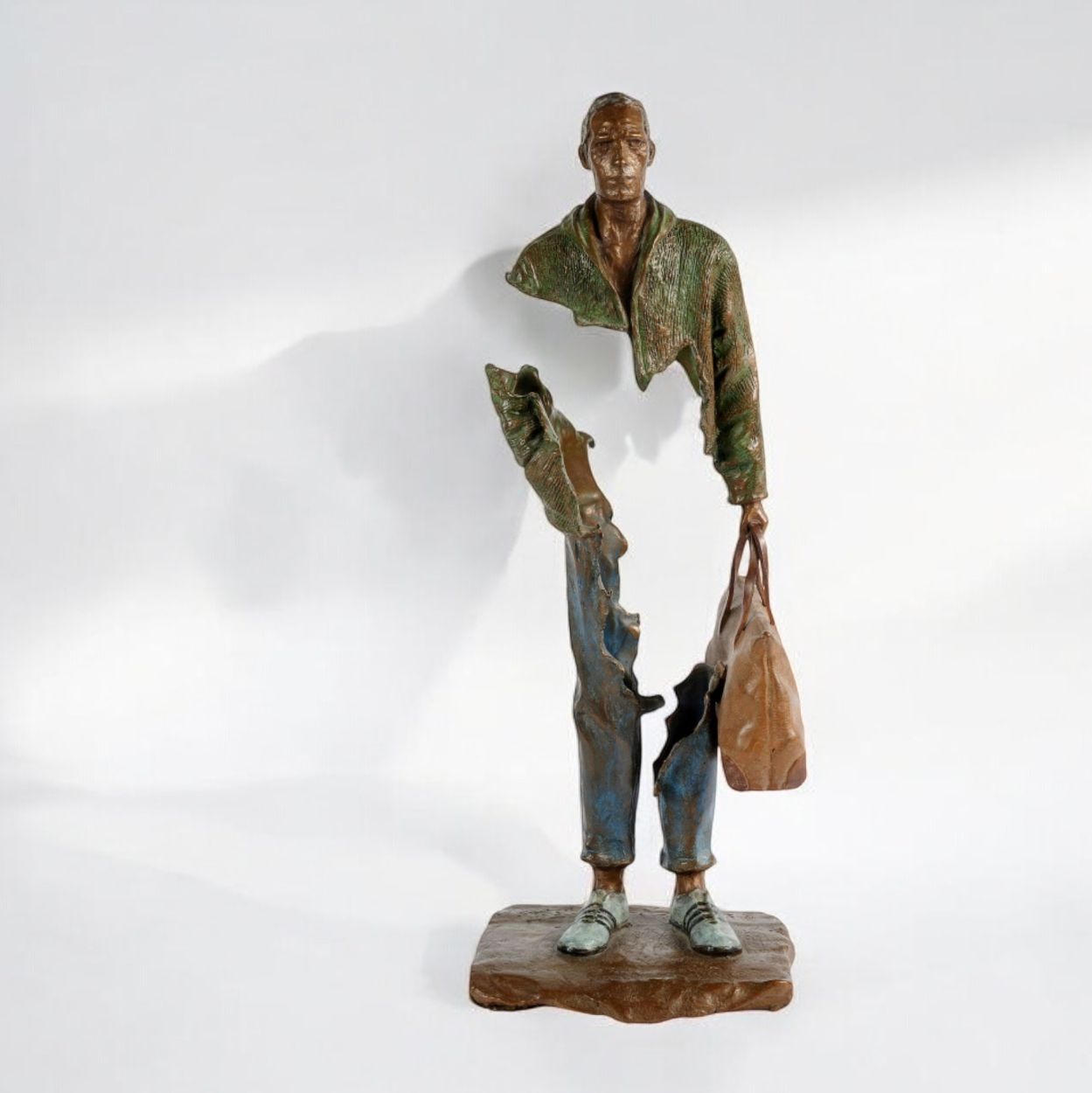
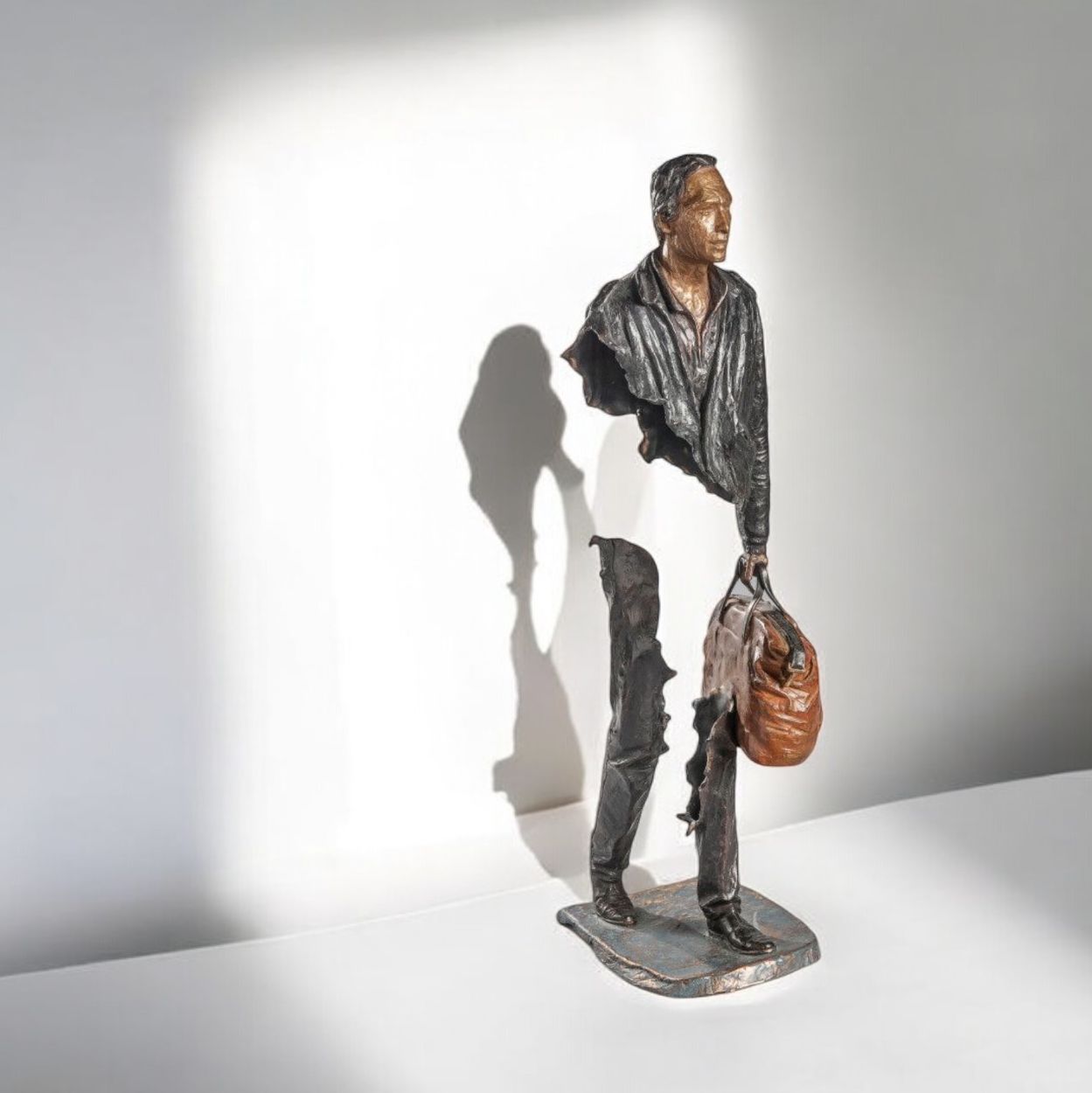
The success of Bruno Catalano's sculptures
The success of Bruno Catalano's sculptures has been growing ever since he unveiled his iconic Voyageurs series. Each of his pieces, characterized by fragmented bodies and incomplete silhouettes, fascinates an ever-growing audience.
Over the course of his career, Catalano has developed his sculptures in terms of both form and motif, constantly refining his technique while retaining his unique signature: figures marked by absence and exile. These torn figures, seemingly suspended between two worlds, captivate with their innovative aesthetics and the message they convey.
Today, Bruno Catalano is a recognized and sought-after artist, his works fetching substantial sums on the art market.
Yet they are so sought-after that they rarely appear in auction rooms. Each sculpture, whether a small piece or a monumental work, arouses keen interest among collectors and lovers of contemporary art.
Consequently, the best way to sell a Bruno Catalano sculpture is to present it on the auction market: in this way, buyers are put into competition with each other so that you can obtain the best price.
His distinctive style and the depth of his work have secured Catalano a lasting place in the international artistic landscape, making him one of the most sought-after contemporary sculptors of his generation.
Recognizing Bruno Catalano's signature
Catalano doesn't always sign his works. If you think you own one, it's best to have it appraised.

Knowing the value of a work
If you happen to own one of Bruno Catalano's creations, or you think you might, don't hesitate to request a free evaluation using the form on our website.
A member of our team of experts and certified auctioneers will contact you promptly to provide you with an estimate of the market value of your piece, as well as any relevant information about it.
If you want to sell your property, our specialists will also help you find alternatives to sell it at the best possible price, taking into account market trends.
Response in less than 24h
Related topics

Rating and value of works, paintings by Serge Cha...
Serge Charchoune, a twentieth-century abstract painter, leaves behind a body of work that is much appreciated and highly prized at auction. Their value is high.
Read more >
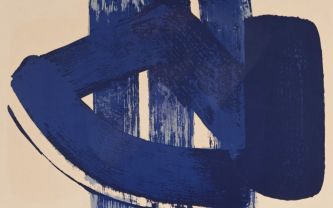
Rating and value of works, lithographs, paintings by Pier...
Pierre Soulages, master of informal painting and outrenoir, produced lithographs and paintings that are highly prized at auction.
Read more >
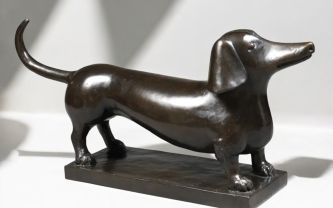
Rating and value of works, sculptures, bronzes by Chana Orl...
Chana Orloff is a Ukrainian artist of the Paris School who has produced works that are highly rated and valued on the art market.
Read more >
Secure site, anonymity preserved
State-approved auctioneer and expert
Free, certified estimates
